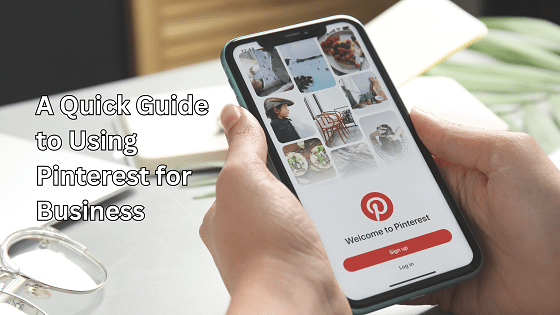Discover nine practical financial strategies for launching a successful startup while maintaining smart spending habits and sustainable growth.
The following is a guest post from my bloggy friend Taylor McKnight on behalf of Prepaid Bill. Interested in having a guest post on my website? Click here for my guest post submission form.
Key takeaways from this post:
– The importance of starting small and scaling gradually
– How to avoid unnecessary spending in early stages
– Smart income management strategies for founders
– Effective debt management techniques
– The role of investors in startup growth
– The importance of market research
– Ways to maintain flexibility in business operations
– Methods for continuous cost optimization
– The value of ongoing financial vigilance
Building Your Startup Smart: 9 Cost-Saving Strategies That Work
The startup culture is a phenomenon that has swept the nation in recent years. It’s one of the most exciting and thrilling ways to shake up life, make a name for yourself, and earn more money than you know what to do with. To startup in business and have everything go your way; however, it’s important not just to have the idea but also to be savvy about financial obligations.
Here are some tips for a startup success:
1. Start Small
This is one of the money-saving tips to begin a startup that should be considered. When you first start, you might be tempted to buy everything necessary and the best available at the time. However, it’s better to take it slow and not spend too much money on the startup. You are aiming to develop a product that is high quality but not too expensive. Your target market will appreciate good quality at a reasonable price. When sales begin, you will still have enough money in the bank to keep things going until your business begins leaving profits behind.
2. Don’t Get Carried Away
When making your startup plan, be realistic about all the financial obligations of starting up from scratch. Don’t get carried away into unnecessary spending. One of the mistakes many startups make is putting too much money into advertising instead of focusing on other aspects of their business, such as marketing the product or proper distribution. If you keep your startup strictly business-oriented and don’t let your enthusiasm for it lead you on a spending spree, then you will find it easier to ensure your success in the long run.
3. Be Smart About Your Income
One smart way to ensure a cost-saving startup is to be smart about managing your income. This is especially true when it comes to paying yourself and other employees if you have them on your team. Don’t pay yourself too much in the beginning. Take a relatively modest salary in line with your skills and expertise. By doing this, you will be able to save money for your startup. You can also save money by not overpaying other employees right out of the gate. This will help you manage profit margins and avoid any potential problems with cash flow if there is a dip in sales later on. You may not want to but you can always make financial cuts in your personal life, thus giving you more flexibility in your business life. For example, making at home meals instead of eating out or having a switching your phone to prepaid for a budget.
4. Keep Your Debt Under Control
Startups are notorious for going into debt with little to no savings on hand, but it doesn’t need to be that way if you plan and know what expenses to expect when starting up from scratch. Above all else, be wise about how much debt you take on. Don’t go overboard with loans from banks and other sources.
It’s better to take a small loan and pay it back early than to take a massive loan you might struggle to pay back in the future. To manage debt levels more effectively, be careful about taking out more money than you need for new equipment, manufacturing needs, or other startup needs. Doing this will help keep your business and budget in line with reality without borrowing too much money, putting your company at risk of going underwater.
5. Look For Investors
Many business owners opt to put their own money into the startup. However, if you don’t have enough money to get the job done and can’t manage debt levels effectively, it’s smart to find investors. Investors serve several purposes when starting up a business.
They might be able to help you with debt management or even invest in your company directly with an infusion of cash that will get your business off on the right foot, but they should never take control of your company in return. Even when you need an investor to help out, it’s important that what you do with your startup is always under your control and not someone else who is just looking for a big payday. Once you get the money, you still have a lot of work to do, and you need to do it from the start.
6. Do Your Research
One of the best ways to ensure a cost-saving startup is to do your research. When it comes to putting a product out onto the market, many things ensure that the end product is just right and sticks in people’s minds. If you don’t know what makes something sell, then you can never hope for it to be a successful product.
This is true not just for startups but in general with any business. Research is an important part of business strategy. Even if you have a great idea, you still need to know what the competition is up to and what they will do next. This way, you can always be one step ahead of the game and ensure your business stays in line with consumer expectations rather than doing something too radical or unexpected.
7. Look At All Options
Sticking with your startup because it’s all that you know or convenient for now won’t do anything for your business in the long run. It would help if you were willing to keep an open mind and look at other opportunities that might offer your startup more profitable and less risky outcomes. Maybe your expenses are high, or you need a partner to help out with the business. Before you know it, your startup will turn into big business, and you won’t even recognize it because you’re so busy managing other obligations. But by looking at all options and keeping yourself open to change, you can ensure that new opportunities can be easily integrated into your business plan and goals when the time comes.
8. Be Flexible
One of the most important things when starting up a new company is to manage cash flow efficiently. It’s essential to be flexible to ensure that there are no problems with cash flow later on. This is especially important with startups in their early days and is just starting. While it’s okay to be cautious and conservative, you also need to make sure you’re ready to leap if the time comes. Otherwise, you could find yourself in a hopeless situation with no way out of it. You have to be willing to look for new opportunities and adapt your business plan as time goes on.
9. Find New Ways To Save
Once you get your business up and running, don’t think you can sit back with a big smile on your face knowing you’ll never have to work again. It would help if you kept looking for new ways to keep your startup costs down. Many businesses make the mistake of thinking that everything will be smooth sailing from that point on once they get up and running. But even if you don’t have to worry about getting a business loan, it doesn’t mean you need to spend money on new things completely out of the blue.
You should always be saving money and looking for things that can be done cheaply instead of expensively. If you find yourself in a position where your startup is already successful, then it’s time you start thinking about scaling back and saving money.
Starting a business is never easy, and you should be well aware of what to keep in mind when starting a startup. The bottom line is that you need to manage your startup properly if you want it to last. Make sure you’re always keeping an eye on things and managing cash flow effectively to keep an eye on things. Anything less than that will lead to disaster later on down the road.





